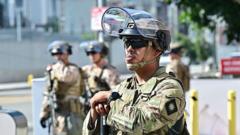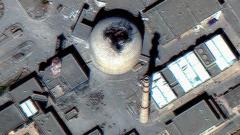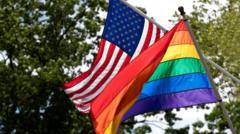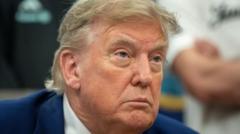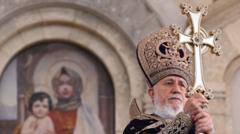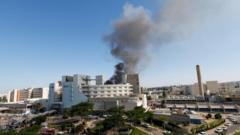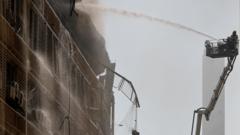In a deeply consequential election for Canada, voters are heading to the polls today to determine the country’s leadership amidst a challenging political landscape shaped by President Trump’s trade war and the recent resignation of Justin Trudeau. The Liberal Party, led by newly appointed Prime Minister Mark Carney, is currently in a tight race against the Conservative Party under Pierre Poilievre, who was previously seen as the frontrunner.
Canada Faces Pivotal Election Amid Turmoil and Tariffs

Canada Faces Pivotal Election Amid Turmoil and Tariffs
Canadians go to the polls on April 28, 2025, to decide their next leader as tensions rise due to U.S. tariffs and political uncertainties.
Encouraged by a slight rebound in recent polls, the Liberal Party seeks to maintain the governorship after a decade of Trudeau leadership, while the Conservative Party—modified by Trump’s tariff controversies—is determined to reclaim power after almost ten years in opposition. This election is marked by heightened concerns over economic policies, public opinion regarding U.S. relations, and the potential for Canada’s sovereignty to be undermined.
Although other political parties, such as the New Democratic Party and the Bloc Québécois, entered the fray, polls imply that the contest remains largely between Carney and Poilievre. The election today marks a critical juncture for Canada, reflective of how U.S. political dynamics can ripple across borders.
Polling stations opened across the country for a twelve-hour voting period as Canadians, fueled by recurring debates around trade policies and economic stability, prepare to shape the nation’s future as results are expected late into the night. The looming question remains: Who will emerge as the leader meant to steer Canada through uncertain economic waters?
As of today, Carney’s experience in finance positions him as a strong candidate against Trump’s aggressive trade policies, while Poilievre’s populist approach aims to rally support among conservative voters. The latest updates indicate a tightly contested race, with a significant focus on how each candidate plans to navigate the challenging international environment facing Canada.
With the fate of national leadership hanging in the balance, Canadian voters are poised to make a decision that will undoubtedly reverberate through their economy and international relations for years to come.
Although other political parties, such as the New Democratic Party and the Bloc Québécois, entered the fray, polls imply that the contest remains largely between Carney and Poilievre. The election today marks a critical juncture for Canada, reflective of how U.S. political dynamics can ripple across borders.
Polling stations opened across the country for a twelve-hour voting period as Canadians, fueled by recurring debates around trade policies and economic stability, prepare to shape the nation’s future as results are expected late into the night. The looming question remains: Who will emerge as the leader meant to steer Canada through uncertain economic waters?
As of today, Carney’s experience in finance positions him as a strong candidate against Trump’s aggressive trade policies, while Poilievre’s populist approach aims to rally support among conservative voters. The latest updates indicate a tightly contested race, with a significant focus on how each candidate plans to navigate the challenging international environment facing Canada.
With the fate of national leadership hanging in the balance, Canadian voters are poised to make a decision that will undoubtedly reverberate through their economy and international relations for years to come.


